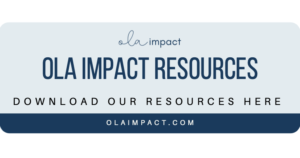A climate activist stole the spotlight in the Louis Vuitton show at Paris Fashion Week, carrying a white banner stating “Overconsumption = Extinction”. Since then, the video of the protest has circulated social media platforms and added to the long conversation on ethical consumption in the fashion industry.
The COVID-19 pandemic brought an onslaught of questions about sustainability in the fashion industry. As claims of Shein’s intellectual property thefts and use of child labor surfaced, consumers began to question the ethics and sustainability of popular fast fashion brands.
Consumers are demanding transparency and searching for brands they can trust. Before, phrases like ‘eco-friendly’, ‘sustainable product’, and ‘natural ingredients’ drew consumers to brands. Now, they’re looking at labor practices, health and safety regulations, recycled materials, and more to show commitment to the planet and people.
This increased pressure on brands calls for the need of a decades-old practice: ethical marketing.

What is ethical marketing?
Ethical marketing has been around for decades, going by varying terms like “green marketing” and “eco-marketing”. Despite being around since the 1980s, however, ethical marketing and conscious consumption has only more recently become popular.
This marketing strategy seeks to create transparency between the brand and consumer, beginning with material sourcing to product disposal. Ethical marketers aim to gain customer trust and loyalty, by ensuring transparency and accountability within the business strategy and supply sourcing.
Follow these five steps to get started on your ethical marketing journey:
1. Maintain transparency
As you can probably tell, transparency is central to your brand’s ethical marketing strategy. Conscious consumers are looking beyond the price tag and searching for the ‘true cost’ of a product. This encompasses everything from materials used to the carbon footprint of shipping and delivery.
With the climate crisis at the forefront of the younger generation, it’s critical for businesses to remain transparent on their brand’s impact on the people and planet. Consider creating a map showing where you source your materials from, or releasing your brand’s carbon footprint. By doing so, you show customers that you care about their passions and their causes.
2. Give customers a voice
Create a space for customer reviews on your product page, or send email prompts requesting customer feedback. If you own a restaurant or service, try linking the Yelp or Tripadvisor pages to your site. By allowing customers to share their experiences with your brand, you establish clear communication between your brand, your customers, and potential customers.
Positive comments will boost your brand’s image and attract new customers, while critical comments will allow you to improve and tinker with your brand. Additionally, you get a better gauge of what consumers are looking for in brands, allowing you to respond more quickly and attentively to new trends.
3. Be active on social media
Meet customers where they are. Gen Z and Millennials spend hours scrolling through Tik Tok and Instagram, so why not join the conversation? Post regularly and at times that work best for your target group. Are you a Millennial-oriented brand? Try posting during their lunch hours! Or do you focus on Gen Z? Then try posting after school hours.
By doing so, you reach the most customers at the times that work for them. Additionally, make sure you respond to comments, DMs, and any inquiries on social media. Even a quick “thank you” or shoutout will make your customers feel appreciated by your brand.

4. Be honest about mistakes
Mistakes happen. When they do, make sure you remain 100% transparent with consumers. Be direct about your mistakes and explain how your brand will address them. Create a metric for your team to measure success, and share your progress with consumers.
The biggest error a brand can make is to hide their mistake. The second biggest error is to not follow through. Align your words with your actions. Empty promises and unfulfilled actions signal a lack of commitment to your consumers, your stakeholders, and the planet.
5. Invest in the health and safety of your employees
Employees are integral to your brand’s marketing. Think of your employees as your brand ambassadors. They support your brand’s success, and at times, they interact directly with your customers.
When you invest in your employees’ health and safety, you foster a community of care and positivity within your brand. This infiltrated every level of your brand, from customer service to supplier relationships. In doing so, you create a positive image for your brand.
Cluey Consumer
Cluey Consumer is a great example of a clean-tech brand using social media to educate and inspire their audience.
Author: Lei Anne Rabeje




